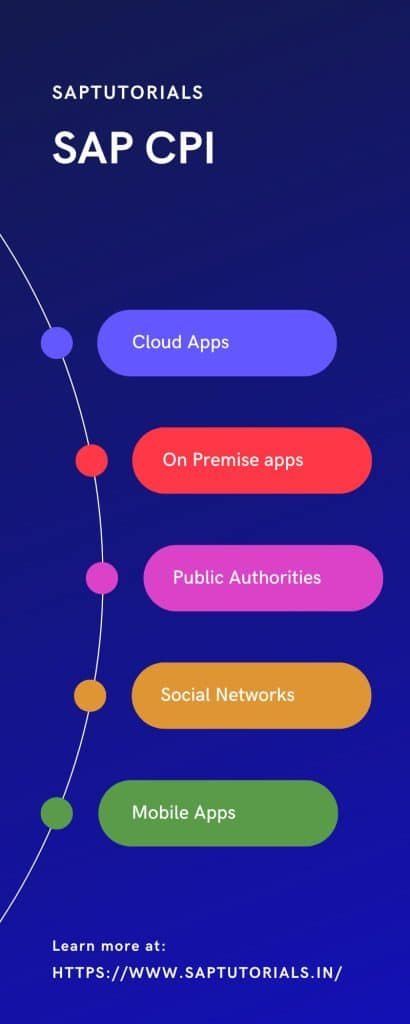The revolutionary technological solution known as SAP Cloud Platform Integration (SAP CPI) gives organizations the ability to integrate a wide variety of apps and systems to ensure that their company operations are carried out without any issues. It enables the exchange of data in real time between applications, databases, and systems.
Do you want to improve the efficiency of your business operations by using SAP CPI? This article will discuss the principles of it, as well as the benefits that it offers that might be beneficial to your company.
Table of Contents
What is SAP CPI?
SAP CPI (Cloud tool Integration) links systems, applications, and data for enterprises. This single tool simplifies process administration, data translation, and networking. Businesses may profit from its growth, flexibility, safety, and affordability.
SAP Cloud Platform Integration (CPI) connects business applications and data repositories on the cloud. The software’s many tools and capabilities let users strategically organize, execute, and monitor service and application interconnections. SAP CPI is based on interaction flows. An order of consecutive acts or logical processes that justify integration. Source adapter, message mapping, and receiver adapter comprise the integration flow.
Beyond these essentials, SAP CPI offers templates and integration material pre-built for the most popular applications and systems, such as SAP ERP, Salesforce, and ServiceNow’s Web-based Designer tools to design and change integration processes. The tool detects integration problems. Many security and compliance solutions incorporate data integrity, reliability, and accessibility. SAP CPI’s scalable, adaptive, and adjustable architecture lets companies create and manage business-critical relationships. SAP Platform Cloud Integration’s inner workings may intrigue. Virtualized environments let developers concentrate on corporate integration and reduce system maintenance. Integration designers using SAP Process Orchestration may profit.
How does the SAP CPI work?
SAP CPI offers a graphical user interface (GUI) for creating, managing, and developing integrations. The solution comes with a selection of connectors and adapters for interacting with various systems and applications, including SAP and non-SAP systems.
SAP CPI uses a message-based architecture to share data. Provides XML, JSON, and flat file communication formats for data sharing between computers. Maps and scripts assist in converting data across formats in the solution.

SAP CPI Integration Platform Benefits:
- Increased Connectivity: A single platform for managing integration needs.
- Rapid Integration: Enables rapid development, build, and maintenance.
- Greater Adaptability: Offers transformation tools for data transformation.
SAP CPI challenges:
- Complexity: Requires extensive planning, testing, and training.
- Data Safety: Requires secure, encrypted connections for successful integration.
- User Adoption: Requires a shift in thinking and methods, requiring training and support.

Best Practices for SAP CPI
- Set clear goals: Clearly define and align objectives for SAP CPI to ensure effective application and usage.
- Invest in data security: Ensure data encryption and security during delivery and storage to prevent data breaches during the merging process.
- Provide user support and training: Invest in training and assistance to ensure users understand the benefits of the service, boosting its usage and implementation.
Why should you use SAP Cloud Platform Integration?
Let’s take a look at some of the key benefits of this platform:
SAP Cloud Platform Integration Benefits
- Provides a variety of integration options for on-premises and cloud-based applications, data sources, and systems.
- Offers flexibility with point-to-point integration, hub-and-spoke strategy, and mixed technique.
- Offers real-time monitoring and alerting for detecting and resolving issues before they become major problems.
- Enables the secure and expeditious connection of critical systems and modules, adhering to regulatory requirements like GDPR and ISO 27001.
- Minimizes time and effort required to link systems and applications, saving money and reducing error and downtime risks.
- Designed for scalability, allowing easy connection of new systems and applications as needs change.
- Quickly links apps and processes, reducing time to value.
- Hyperscalers Integration Cost Savings
How to Get Started with SAP CPI
You must register for the SAP Cloud Platform before starting integration development. Integration packages may help you learn how it works, making it easy to create your integrations.
Conclusion
SAP Cloud Platform Integration is a comprehensive platform with many integration options, adaptability, security, cost savings, rapid time-to-value, scalability, real-time monitoring and alerting services, and more. These features simplify processes, save costs, and boost efficiency. SAP CPI allows integrating systems, applications, and data easier than ever with a single platform.
You might also like the below articles.
- SAP GTS for International Businesses
- Rise with sap
- What is Hyperscalers
- SAP bpc comprehensive guide
- SAP Business One
- Production Planning
- Software Testing: Tips and Tricks to Ensure Quality and Efficiency
- SAP PM Module
- SAP Data Archiving
- Greenfield vs brownfield
- SAP Central Finance
- SAP Enable now
- SAP Automation tools
- SAP Customer Relationship Management
- Debugging for functional consultants
- SAP BRIM
- SAP ALM
- Cloud computing
- SAP Technical
- SAP Solution manager
- SAP C4HANA
- SAP Successfactors
- MRP live
- Inventory management
- SAP Best Practices